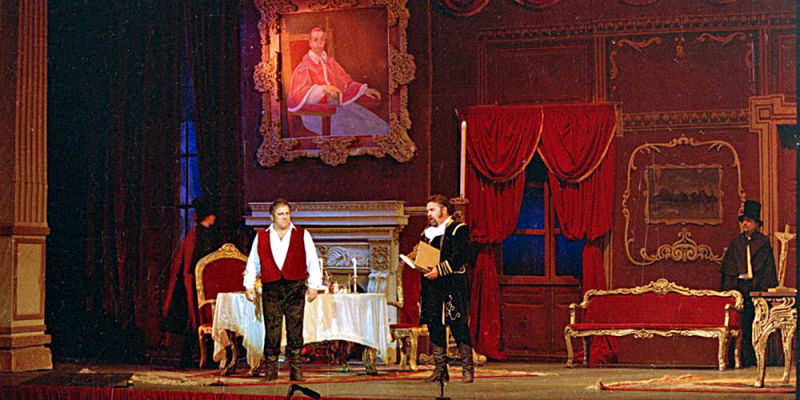
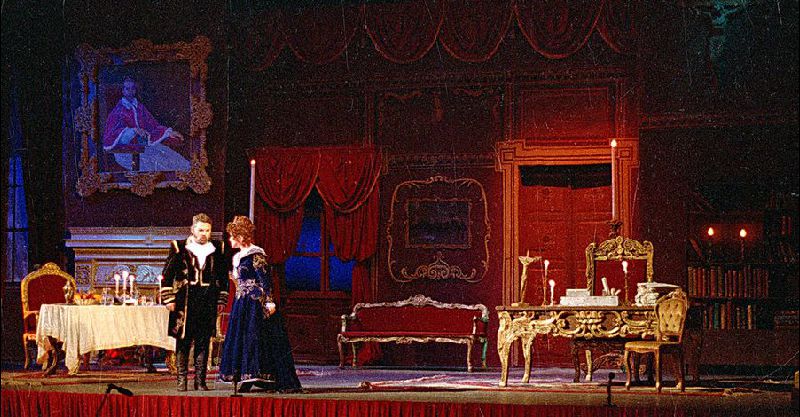
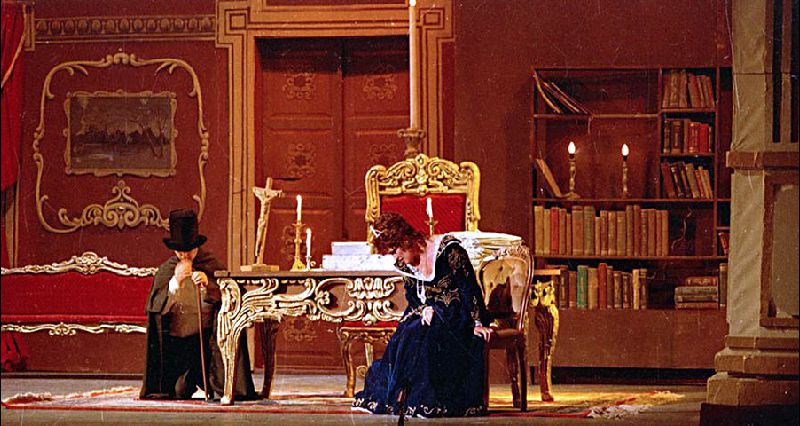
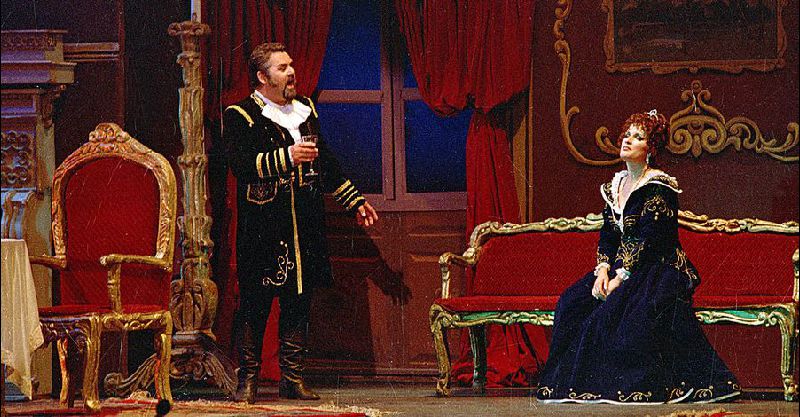
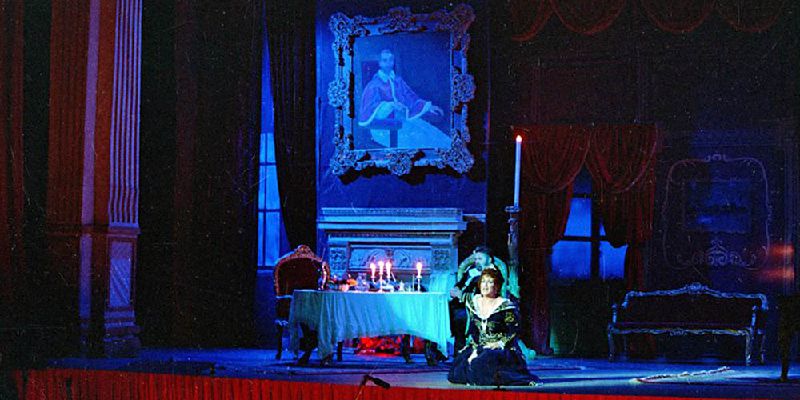
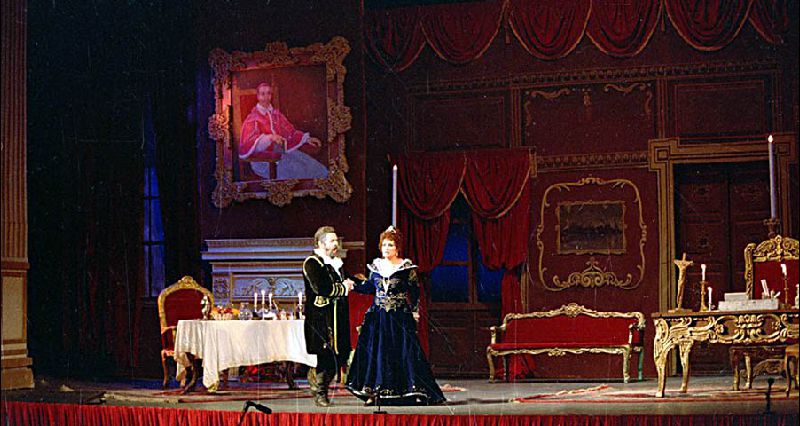
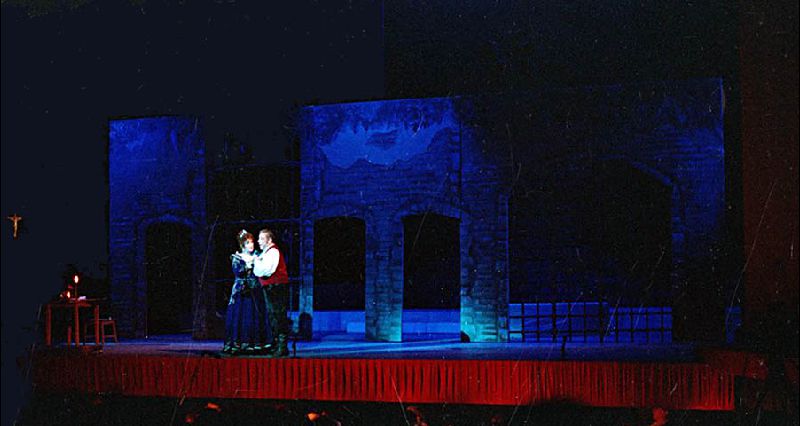
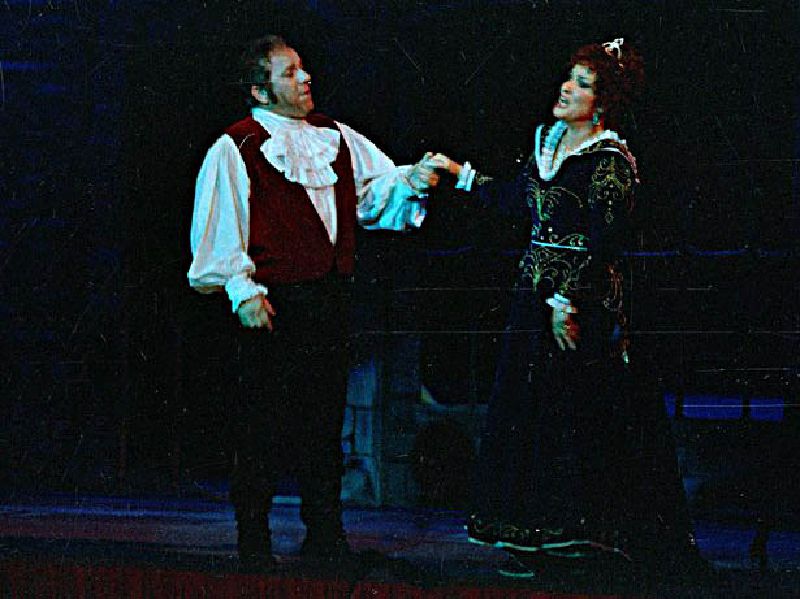
Tosca - Musica di Giacomo Puccini - Melodramma in tre atti. Libretto di Giuseppe Giacosa e Luigi Illica, dal dramma "Tosca" di Victorien Sardou. Prima rappresentazione: Roma, Teatro Costanzi, 14 gennaio 1900. Opera centrale della triade di successo in cui rientrano Bohème (1896) e Madama Butterfly (1904), Tosca si distingue, rispetto al lirismo della prima e alla dimensione esotica e statica della seconda, per il ritmo narrativo incalzante e concitato, l’ambientazione storica, lo svolgimento rapido dell’azione concentrata nell’arco di tempo di una giornata, ponendosi per alcuni aspetti in linea con il verismo: il realismo, la presenza di alcune scene violente e anche truci come il tentato stupro da parte di Scarpia, l’uccisione di questo per mano di Tosca, la fucilazione di Cavaradossi. Tratta dal dramma francese di Sardou, Tosca del 1887, andò in scena al Teatro Costanzi di Roma il 14 gennaio 1900. Proprio a Roma è ambientata la vicenda che si svolge nel giugno del 1800 nel periodo immediatamente precedente la battaglia di Marengo, quando i Borboni erano momentaneamente riusciti ad abbattere il governo repubblicano instaurato da Napoleone, insediandosi a Palazzo Farnese. Celebri monumenti della città eterna costituiscono l’ambientazione scenografica dei tre rispettivi atti: la Chiesa di S. Andrea della Valle, Palazzo Farnese e Castel Sant’Angelo, sul cui sfondo si svolge la drammatica vicenda di Tosca, celebre cantante che, vittima della sua gelosia, conduce alla cattura del suo amato Cavaradossi seguace di ideali giacobini. Il tema libertario si intreccia con quello erotico che rimane tuttavia in primo piano colorandosi dei toni perversi del sadismo nel personaggio antagonistico di Scarpia, per la cui voce baritonale Puccini scrive la prima grande parte per una voce bassa maschile. Egli è il vero motore del dramma, così com’è preannunciato dai celebri tre accordi a piena orchestra che aprono l’opera cogliendo in maniera semplice la ferocia del personaggio. Il successo intramontabile dell’opera è legata ai momenti di grande teatro che essa racchiude, basti citare la grandiosa scena di insieme conclusiva del primo atto che con grande efficacia drammatica sovrappone alla cerimonia religiosa il perverso e subdolo piano di Scarpia. Musicalmente è un’opera che va verso la modernità per il suo andamento fratto, per il modo di cantare che rompe la stroficità e la rotondità melodica, pur salvaguardando ampi momenti di espansione lirica come i celeberrimi brani “Vissi d’arte” di Tosca o “E lucean le stelle” del tenore, il cui tema dell’amore sensuale ritorna a conclusione dell’opera. I ATTO - Chiesa di Sant’Andrea della Valle. - Il periodo storico della guerra fra le truppe napoleoniche e quelle papaline. II ATTO - Appartamento di Scarpia al piano superiore di Palazzo Farnese. III ATTO - Piattaforma di Castel Sant’Angelo.
Tosca-Music by Giacomo Puccini-melodrama in three acts. Libretto by Giuseppe Giacosa and Luigi Illica, from the drama "Tosca" by Victorien Sardou. First performance: Rome, Teatro Chant, 14 January 1900. The central work of the successful triad in which Bohème (1896) and Madama Butterfly (1904), Tosca distinguishes itself, compared to the lyricism of the first and the exotic and static dimension of the second, for the insistent and concited narrative rhythm, the historical setting, the rapid execution of the action concentrated in the time of a day, placing itself in some respects in line with the realism: reality , the presence of some violent scenes and even grim as the attempted rape by Scarpia, the killing of this at the hands of Tosca, the shooting of Cavaradossi. Taken from the French drama of Sardou, Tosca of 1887, he went on stage at the Teatro chant in Rome on January 14, 1900. Precisely in Rome is set the story that takes place in June of 1800 in the period immediately preceding the Battle of Marengo, when the Bourbons were momentarily able to break down the Republican government established by Napoleon, settling at Palazzo Farnese. Famous monuments of the Eternal City constitute the scenographic setting of the three respective acts: the Church of S. Andrea della Valle, Palazzo Farnese and Castel Sant'Angelo, on whose backdrop is the dramatic story of Tosca, famous singer who, victim of his jealousy, leads to the capture of his beloved Cavaradossi follower of ideals Jacobins. The libertarian theme is intertwined with the erotic one that remains, however, in the foreground coloring of the perverse tones of the sadism in the antagonistic character of Scarpia, for whose baritone voice Puccini writes the first large part for a low male voice. He is the real engine of the drama, as it is foretold by the famous three chords to the full orchestra that open the work by grasping in a simple way the ferocity of the character. The timeless success of the work is linked to the moments of great theatre that it encloses, suffice it to mention the grandiose scene of a conclusive ensemble of the first act that with great dramatic efficacy overlaps the religious ceremony the perverse and sneaky plan of Scarpia. Musically it is a work that goes towards modernity for its development, for the way of singing that breaks the Stroficità and the melodic roundness, while safeguarding ample moments of lyric expansion like the famous tracks "Vissi d'arte" of Tosca or "and Lucean the Stars" of the tenor, whose theme of sensual love returns to the conclusion of the opera.